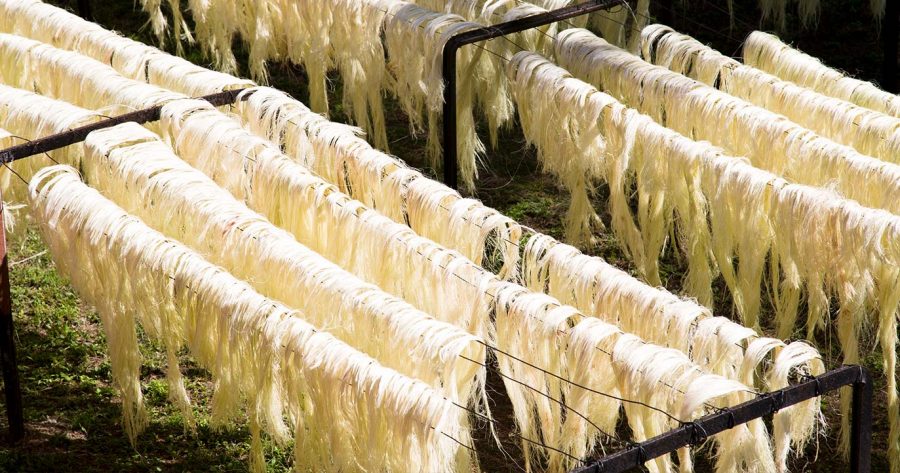
SISAL FIBRE: ORIGIN AND USES
Sisal fibre is obtained from the leaves of the sisal agave plant, a succulent plant native to Mexico; after cutting, the sword-shaped leaf, about 1.5/2 metres long, is ‘decorticated’, i.e. crushed, to separate the fibre from the waste parts of the leaf. Water is also used in this process to wash away all the waste; the fibre is then dried in the sun, before being packed or undergoing further processing for spinning.
Brazil is the main exporter of sisal fibre, but the sisal agave plant is also cultivated in Kenya, Madagascar and Tanzania. Sisal fibre is mainly used for the production of ropes and string with a coarse and rough appearance; it has excellent tensile strength and excellent weather resistance. Sisal fibre is a natural fibre and therefore completely biodegradable.
It is a fibre that can also be used to add rigidity to plaster artefacts, such as panels, cornices, pilasters, columns, lampshades, capitals and ornaments, as it does not remain visible on the surface of the finished product.
Lottini srl imports sisal fibre directly from the manufacturer and guarantees availability for most of the commonly used yarns and twists, as well as various other types, such as carded sisal fibre, sisal sliver and raw sisal fibre.

